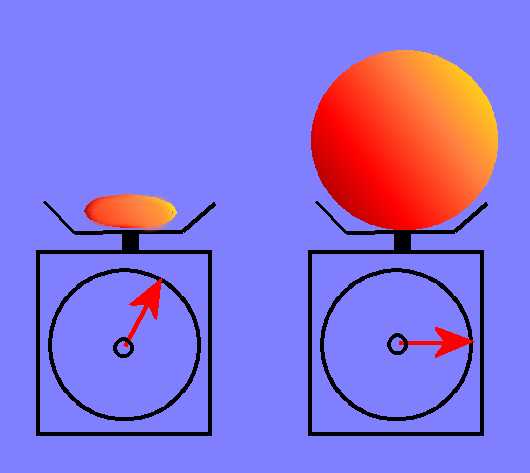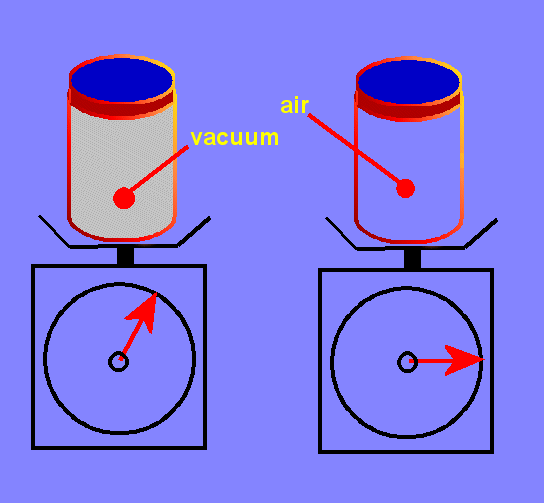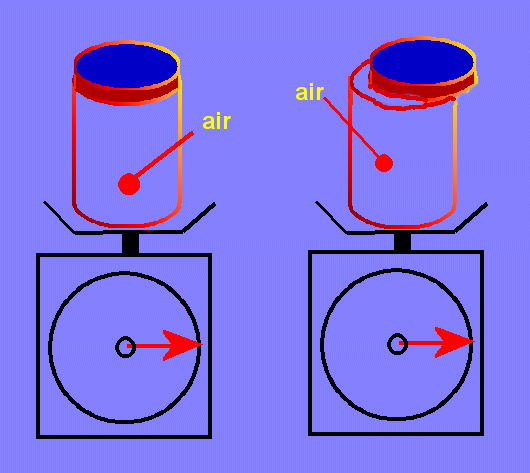|
Your trouble begins when someone asks you to open the lid and placed it on top of the jar. Now what change would we see on the scale?
With no change in the reading of the scale, you can argue that only those part of the air insides the jar is being weighted but this time you won't believe it yourself either.
Well, the answer to all these lies simply with the Archimedes' Principle which state that the upthrust on a body is equal to the weight of the fluid displaced by the body.
In the first case, the expanded ballon displaced the surrounding air and so an increased upthrust resulted. The magnitude of the increase being equal to the weight of the air it displaced. If we ignore the thin thickness of the balloon surface, this is exactly the amount of air we put inside the balloon in the first place. The upthrust force is equal to the weight of the air inside the balloon so they cancelled each other. There will NOT be an increase in the weight of the balloon.
Hard to believe? Why not try filling up an plastic bag all under water and check whether you can actually feel that the bag is now heavier, while your hand and the whole bag are still under water.
| 

